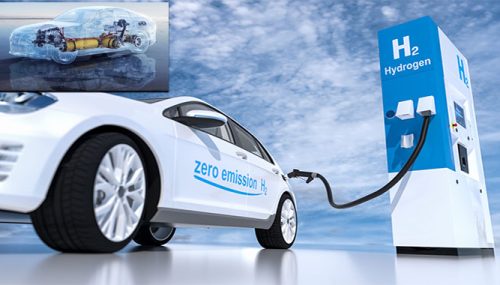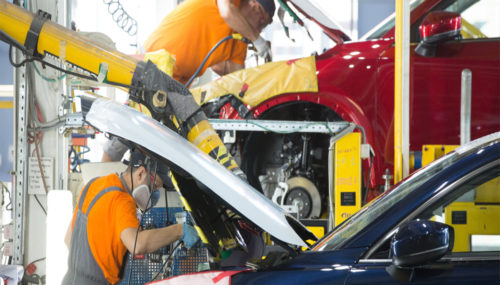Achieving and maintaining peak engine performance is critical for your vehicle’s longevity and fuel efficiency. One essential aspect of vehicle maintenance is ensuring that the carburetor, which plays a crucial role in regulating the air-fuel mixture, remains clean and free of deposits. Over time, dirt, varnish, and fuel residue can accumulate in the carburetor, leading to poor engine performance, reduced fuel efficiency, and even stalling or failure.
Fortunately, a carburetor parts cleaner can effectively remove these unwanted buildups, helping to maximize engine efficiency. This guide covers the importance of carburetor cleaning, how to properly use a carb cleaner, and the benefits of regular carburetor maintenance.
The Importance of a Clean Carburetor
A carburetor’s function is to mix fuel with air in the proper ratio for combustion inside the engine. When the carburetor is clean, this mixture occurs efficiently, ensuring optimal engine performance. However, over time, debris and contaminants can accumulate inside the carburetor, affecting its functionality.
A clogged or dirty carburetor can cause a range of engine problems, such as rough idling, difficulty starting, or stalling during acceleration. These issues not only reduce the driving experience but also increase fuel consumption as the engine struggles to compensate for the improper air-fuel mixture. Worse still, neglecting carburetor maintenance may lead to more severe issues, including engine damage.
By using a carburetor parts cleaner, you can dissolve and remove these contaminants, restoring your carburetor’s functionality and extending your engine’s life. Regular cleaning of the carburetor can prevent expensive repairs and contribute to a smoother, more efficient driving experience.
How to Use Carb Cleaner Effectively
Using a carburetor parts cleaner is a straightforward process, but it requires a certain level of care and attention to detail to ensure the best results. Start by gathering all necessary tools and materials. A high-quality carburetor parts cleaner, protective gloves, a screwdriver, wrenches, and a clean cloth or rag are essential. Depending on the make and model of your vehicle, additional tools might be required, so consult your vehicle’s manual before proceeding.
Once you have your tools ready, locate the carburetor in your engine. It is typically found near the intake manifold, and while accessible, care must be taken when removing it. Disconnect the fuel line, throttle linkage, and any other components connected to the carburetor, keeping all small parts organized. After removing the carburetor, place it on a clean surface for inspection.
Next, spray the carburetor parts cleaner generously on both the exterior and interior surfaces of the carburetor. This cleaner is designed to break down the accumulated deposits of dirt, varnish, and other contaminants that hinder engine performance. Allow the cleaner to penetrate and dissolve the buildup for several minutes. During this time, inspect the carburetor’s jets, gaskets, and other small components, as they may need additional attention.
For stubborn areas where buildup remains, gently scrub with a soft brush or cloth. Pay close attention to the fuel jets and passages, as these are common areas for blockages. After thoroughly cleaning all parts of the carburetor, wipe away any excess cleaner with a clean rag. Some carburetor cleaners are designed to evaporate quickly, but it’s still a good idea to ensure all residue is removed before reinstalling the carburetor.
Benefits of Regular Carburetor Maintenance
Using a carburetor parts cleaner offers numerous benefits, not only for the engine but also for the vehicle owner. The primary advantage is improved engine performance. A clean carburetor ensures that the air-fuel mixture is properly balanced, resulting in smoother running, more responsive acceleration, and consistent power output.
Fuel efficiency is another key benefit. A dirty or clogged carburetor forces the engine to work harder, often consuming more fuel to maintain the same level of performance. By keeping the carburetor clean, fuel consumption is reduced, which can lead to significant savings at the gas pump over time. Additionally, this improved efficiency helps to lower emissions, making your vehicle more environmentally friendly.
Another advantage is the extended lifespan of your engine. Over time, dirt and debris can cause wear and tear on engine components, leading to expensive repairs or even engine failure. Regularly using a carburetor parts cleaner to remove harmful deposits helps protect these components, reducing the likelihood of major repairs and extending the life of your engine.
How Often Should You Clean Your Carburetor?
One of the most common questions vehicle owners ask is how frequently they should clean their carburetor. The answer depends largely on your driving habits, environment, and the specific vehicle you own. However, as a general rule, it is recommended to clean your carburetor at least once every 6,000 to 12,000 miles or at least once a year.
For vehicles that operate in harsh conditions, such as off-road environments or areas with high levels of dust and debris, more frequent cleanings may be necessary. Dirt and dust can quickly accumulate inside the carburetor, leading to clogging and poor performance. In such cases, cleaning the carburetor every few months can help ensure optimal performance.
Additionally, if you notice any signs of carburetor issues, such as rough idling, difficulty starting, or increased fuel consumption, it’s a good idea to inspect and clean the carburetor. Regular maintenance helps identify potential problems early and prevents more serious engine issues down the line.
Maintaining a clean carburetor is a simple yet effective way to keep your vehicle running at its best for years to come.



















